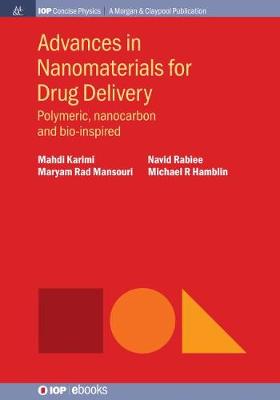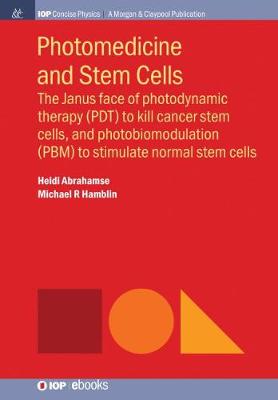Iop Concise Physics
4 total works
Carbon Nanotubes in Drug and Gene Delivery
by Mahdi Karimi, Amir Ghasemi, Soroush Mirkiani, Masoud Mousavi Basri, and Michael Hamblin
Published 24 October 2017
Recent important discoveries and developments in nanotechnology have had a remarkable and ever-increasing impact on many industries, especially materials science, pharmaceuticals, and biotechnology. Nanocarriers have been investigated for a wide variety of different medical applications. Some examples of these nanocarriers include polymersomes, liposomes, micelles and carbon-based nanomaterials. Within this book, the authors describe different features of carbon nanotubes (CNTs), survey the properties of both the multi-walled and single-walled varieties, and cover their applications in drug and gene delivery. In addition, the book explains the structure and properties of CNTs prepared by different method, and discussed their isolation and purification. The future of CNTs in the field of biomedical science will depend on minimizing their adverse effects by careful study of their structure and properties.
Advances in Nanomaterials for Drug Delivery
by Mahdi Karimi, Maryam Rad Mansouri, Navid Rabiee, and Michael R Hamblin
Published 5 December 2018
Nanomedicine is a developing field, which includes different disciplines such as material science, chemistry, engineering and medicine devoted to the design, synthesis and construction of high-tech nanostructures. The ability of these structures to have their chemical and physical properties tuned by structural modification, has allowed their use in drug delivery systems, gene therapy delivery, and various types of theranostic approaches. Colloidal noble metal nanoparticles and other nanostructures have many therapeutic and diagnostic applications. The concept of drug targeting as a magic bullet has led to much research in chemical modification to design and optimize the binding to targeted receptors. It is important to understand the precise relationship between the drug and the carrier and its ability to target specific tissues, and pathogens to make an efficient drug delivery system. This book covers advances based on different drug delivery systems: polymeric and hyper branched nanomaterials, carbon-based nanomaterials, nature-inspired nanomaterials, and pathogen-based carriers.
Smart External Stimulus-Responsive Nanocarriers for Drug and Gene Delivery
by Mahdi Karimi, Parham Sahandi Zangabad, Amir Ghasemi, and Michael R Hamblin
Published 1 December 2015
The concept of smart drug delivery vehicles involves designing and preparing a nanostructure (or microstructure) that can be loaded with a cargo, this can be a therapeutic drug, a contrast agent for imaging, or a nucleic acid for gene therapy. The nanocarrier serves to protect the cargo from degradation by enzymes in the body, to enhance the solubility of insoluble drugs, to extend the circulation half-life, and to enhance its penetration and accumulation at the target site. Importantly, smart nanocarriers can be designed to be responsive to a specific stimulus, so that the cargo is only released or activated when desired. In this volume we cover smart nanocarriers that respond to externally applied stimuli that usually involve application of physical energy. This physical energy can be applied from outside the body and can either cause cargo release, or can activate the nanostructure to be cytotoxic, or both. The stimuli covered include light of various wavelengths (ultraviolet, visible or infrared), temperature (increased or decreased), magnetic fields (used to externally manipulate nanostructures and to activate them), ultrasound, and electrical and mechanical forces. Finally we discuss the issue of nanotoxicology and the future scope of the field.
Janus, the ancient Roman god depicted with two faces is an appropriate metaphor for light therapy. In the right photodynamic therapy conditions, light is able to kill nearly anything that is living such as cancers, microorganisms, parasites, and more. On the opposite face, light of the correct wavelength and proper dose (photobiomodulation) can heal, regenerate, protect, revitalize and restore any kind of dead, damaged, stressed, dying, degenerating cells, tissue, or organ system. This book discusses both sides of Janus' face in regards to light therapy.



